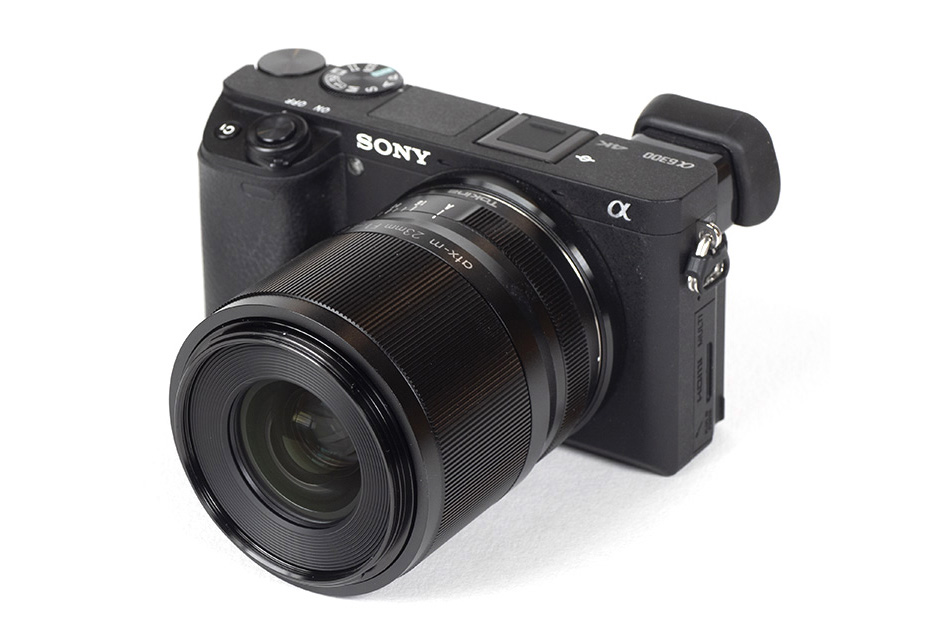Review by Klaus Schroiff, published January 2022
Introduction
The Tokina atx-m 23mm f/1.4 E is a moderate, wide-angle prime lens for APS-C Sony E-mount cameras. The paper specs may appear familiar to some of you. While differences may be present, the lens seems strongly related to the Viltrox AF 23mm f/1.4 which we reviewed last year. Cooperations in the industry are fairly normal and it’s undoubtedly a win for both companies especially regarding Tokina’s better-known branding and service network. The pricing remains reasonable at around $450USD or 370EUR.
The build quality is pretty high so the lens remains true to the Tokina tradition in this respect. It doesn’t feature weather-sealing but most of the lens body is made of metal, including the large focus ring. It also features a dedicated, step-less aperture ring. This may not be ideal for photography purposes but it’s preferred by video producers at least. You can, of course, also control the aperture via the camera when setting the aperture ring to A-mode. The length of the lens remains constant throughout the focus range. A deep, petal-shaped lens hood – made of metal – is provided.

The Tokina lens uses a stepping motor for auto-focusing. It’s moderately fast and noiseless. Manual focusing works, as usual, by wire and is about as good as on modern Sony lenses. EXIF data is provided so camera-side image stabilization is possible (if applicable). On the downside, there is no built-in correction profile thus you have to rely on the raw optical capabilities of the lens in JPEG mode. Updates to the lens’ firmware are also possible using a USB port on the lens mount.
| Specifications | |
|---|---|
| Equivalent focal length (full-format) | “35mm” |
| Equivalent aperture (depth-of-field, full-format) | “f/2.1” |
| Optical construction | 11 elements in 10 groups inc. 2xED elements |
| Number of aperture blades | 9 |
| min. focus distance | 0.3m (max. magnification 1:10) |
| Dimensions | 65×72mm |
| Weight | 276g |
| Filter size | 52mm |
| Hood | petal-shaped (bayonet mount, supplied) |
| Other features | Micro-USB connector for firmware updates |
| Mounts | Fujifilm X, Sony E |
Distortion
The Tokina atx-m 23mm f/1.4 E doesn’t really require image auto-correction when it comes to image distortions. It produces a tiny barrel distortion of 0.27%. There’s a mustage-style sub frequency in there but given the low base distortion, it’s not really annoying.

Vignetting
The vignetting characteristic of the Tokina lens is roughly in line with other high-speed lenses. At f/1.4, there’s a quite heavy light falloff of ~1.6EV (f-stops). Stopping down to f/2 helps but if you want to get rid of most of it, you may wish to stop down to f/4.
Note: We are using straight JPGs for the vignetting test. Due to the different tonal graduation, this results in different vignetting results between manufacturers for the same lens design.

MTF (resolution)
The Tokina atx-m 23mm f/1.4 E has two souls when it comes to resolution. The broader center performance is very good at f/1.4 and even better at f/2 but the borders and corners are weak. The lens jumpstarts at f/2.8, where the outer image field improves drastically. The peak performance is reached between f/4 and f/5.6 with very good quality for the borders/corners. Diffraction has a higher impact beyond but f/8 remains very usable whereas f/11 (not shown) sees a more pronounced decrease in resolution.
The field curvature is marginal. The centering quality of the tested sample was good.
Please note that the MTF results are not directly comparable across the different systems!
Below is a simplified summary of the formal findings. The chart shows line widths per picture height (LW/PH) can be taken as a measure for sharpness. If you want to know more about the MTF50 figures you may check out the corresponding Imatest Explanations.

Chromatic Aberrations (CAs)
Lateral CAs are fairly high at a large aperture with a peak of ~1.7px on average at the image borders. However, the CAs improve substantially from f/2.8 onward and rarely represent an issue.

Bokeh
If you are interested in such a lens, you do so because of the ultra-large aperture and its shallow depth-of-field potential – and the quality of the bokeh (rendering of the out-of-focus blur) becomes an important criterion.
The Tokina lens isn’t perfect, but it has its merits. The rendering of out-of-focus highlights is very good. The lens does not feature aspherical elements which is the type of special glass that tends to introduce artifacts. Thus highlights are very clean as you can see below. While the lens has nine aperture blades, a slightly edgy aperture shape does show up at f/2 already, though.

The images below illustrate the deterioration of the out-of-focus highlights towards the image corners. Note: Please ignore the fuzzy shape of some discs – this is a side effect of the wide-angle character of the lens in conjunction with the protruding photodiodes of the test scene.
The highlight discs are intact in the broader center zone but deteriorate towards the borders/corners of the image field – this is a mechanical vignetting effect that is pretty much unavoidable. The circular shape can be restored by stopping down but a complete correction requires a quite small aperture setting.
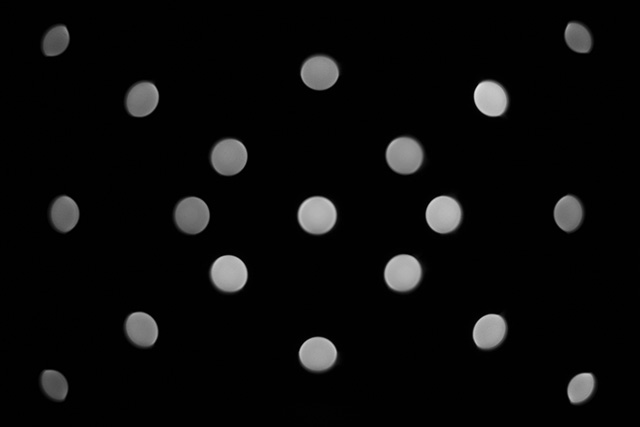

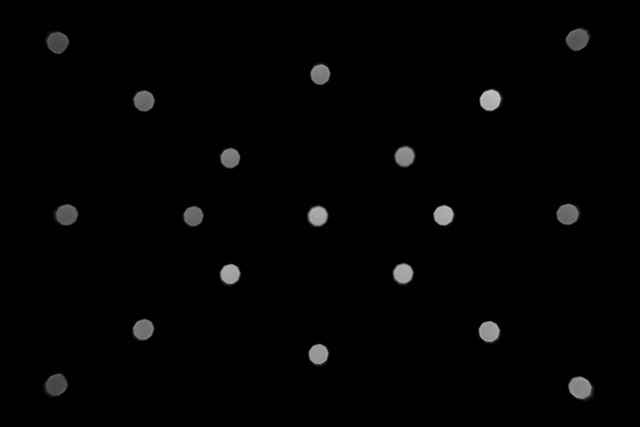
As far as the general blur is concerned, the results are mixed again. The fore- and background blur is quite smooth near the image center but things are getting rougher in the corners – which is to be expected, though.

Bokeh Fringing (LoCA)
Bokeh fringing – also called LoCAs – is a color fringing effect on the Z-axis. It shows purplish halos in front of the in-focus zone and greenish beyond. The effect is clearly visible at f/1.4. Stopping down to f/2 reduces the fringing and there are traces left at f/2.8. As usual, the LoCAs are mostly gone from f/4 onward (not shown).
Keep in mind that bokeh fringing is normal in all but a handful of very expensive APO lenses.
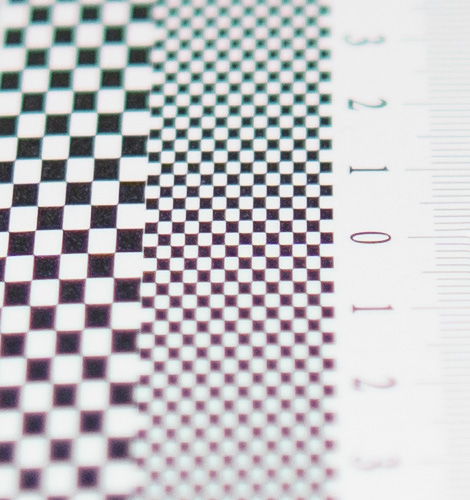
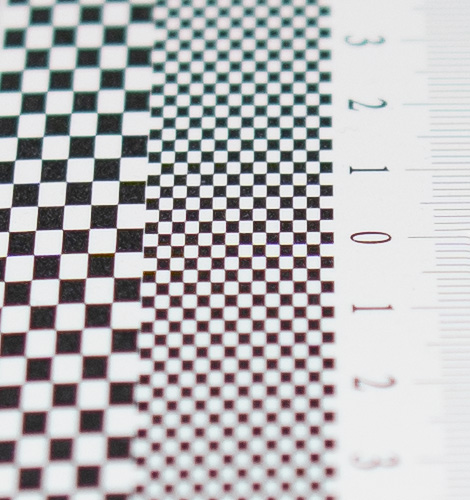

Sample Images
The Tokina atx-m 23mm f/1.4 E is a lens with multiple personalities. It is plenty sharp in the image center at large-aperture settings but the outer image field is soft. To be fair - this is probably forgivable in most real-world scenarios when using f/1.4 or f/2. Images are, however, tack sharp when stopped down to a medium aperture. Heavy vignetting can also be evident at f/1.4. Lateral CAs could be a little better at f/1.4 and f/2 but you can, once again, tame them by stopping down a bit. Image distortions are very low and that's without any digital corrections. The bokeh is better than on most lenses in this class. Out-of-focus highlights are perfectly rendered near the image center although the corners aren't as good in this respect. The focus transition zones are very smooth though. Axial CAs can be visible in critical scenes.
The mechanical quality of the Tokina atx-m 23mm f/1.4 E is high, as usual. It's tightly assembled and most of the lens is made of metal including the lens hood. The video folks will also appreciate the step-less aperture ring. Unfortunately, there is no weather-sealing although that's probably not unexpected in this price class. The AF speed is comparatively moderate but operations are noiseless. Firmware updates are possible via a built-in USB port. Hopefully, Tokina will supply a firmware update with a correction profile soon - because this feature is missing.
Overall, the Tokina lens isn't perfect but it combines the creative potential of a high-speed aperture and sane pricing.
-
Optical Quality
-
Build Quality
-
Price / Performance


